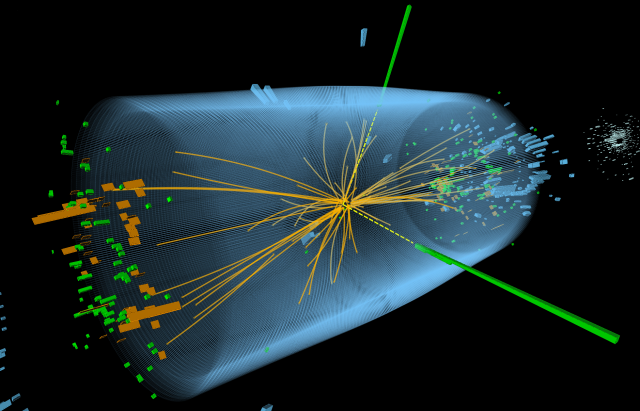
In this reconstruction of a proton collision in the CMS experiment, two muons (trajectories in red) could come from the rare decay of a Bs meson. Credits: CMS
The High-Energy Physics (PHE) pole studies the quarks (for example building blocks of protons and neutrons) and leptons (as electron and neutrino), elementary constituents of matter. The LHC experiments at CERN allows the PHE pole to conduct several experiments:
The PHE pole also have collaborations outside CERN with:
